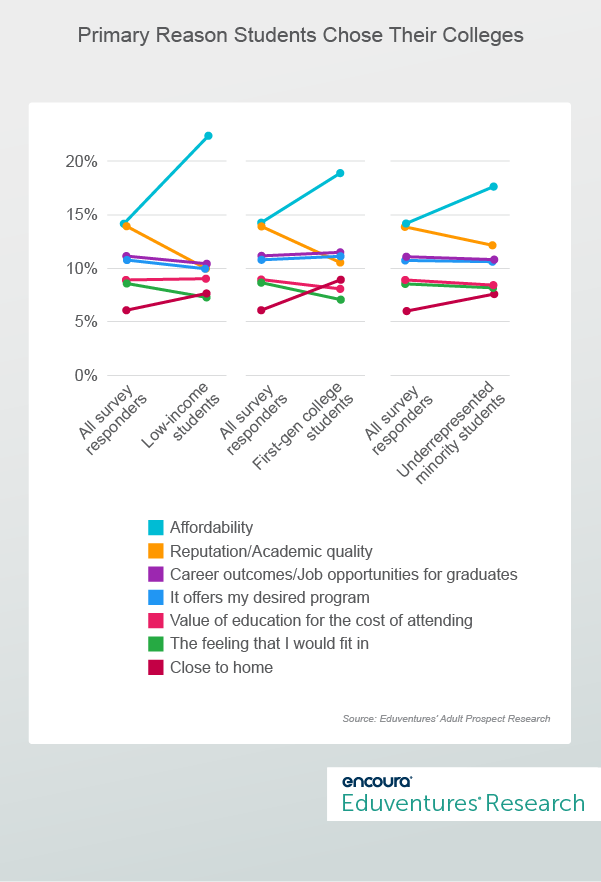As we welcome the first signs of spring, enrollment teams are looking for a deep freezer. With more students making enrollment decisions sooner, and more schools engaging in early action and early decision, enrollment teams face the challenge of maintaining meaningful student engagement for an increasingly prolonged period of time. Encoura’s enrollment funnel data certainly confirms that higher education is feeling the heat.
First, let’s get on the same page about the definition of “melt.” For the purposes of this Wake-Up Call, melt refers to the loss of students from the point of commitment/deposit to enrollment. The National College Attainment Network has estimated that “10-40% of high school students with the intention to enroll in college never actually do so,” with disproportionate impacts for students of color, first-generation college students, and students from low-income backgrounds.
Eduventures took a closer look at more recent melt figures across our database and found that melt has grown by nearly 50% since 2021. Figure 1 details the aggregate melt rate of nearly 250 colleges across the country, varying in size and sector since 2021.
Figure 1.
This increase in melt adds to a growing list of concerns enrollment managers are facing. In Figure 1, it’s clear how year-over-year melt has increased, with a jump in 2024, likely aided by financial aid frustrations.
How can enrollment teams turn the temperature down? Understanding student decision drivers can guide campuses to an outreach approach that is focused on student interests. Eduventures’ Decision Segments™, derived from our annual Admitted Student Research™, provides more insight into what’s motivating students’ decisions. These Decision Segments reflect student responses to the most important reasons why they decided to attend their college choices.
Figure 2 displays the percentage of students that selected each Decision Segment, showing the top seven decision segments for the years 2022 to 2024. Figure 2 compares the results of all responders to those student populations most susceptible to melt.
Figure 2.
The data from Figure 2 reveals how “affordability,” while in play for all students, is especially salient for higher melt student populations. Proximity to home (i.e., “close to home”) is also shown to be a more influential factor among students more susceptible to melt. This Decision Segment is also likely connected to cost; attending a school that is close to home provides the opportunity to save on costs through transportation, meals, and living expenses.
Figure 2 emphasizes the need for melt strategies and resources focused on affordability, college graduate outcomes, and career connections for student groups heavily impacted by melt.
As we prepare for the thick of melt season, identifying the reasons behind students' college choices allows campuses the opportunity to allocate resources effectively to maintain student enrollment in the coming months. Figure 2 showcases how student demographics vary in terms of the primary decision factors driving enrollment. Enrollment teams can effectively form their melt strategies by aligning freeze initiatives to the Decision Segments relevant to institutional and student characteristics.
The Bottom Line
The yield investments campuses make now will support the melt outcomes later. Below are other ways campuses can explore their melt strategies:
- Focus your freeze. How are your institution’s key Decision Segments reflected in your melt strategy? Aligning your melt approach with what drives student decisions will help address outlying student questions, showcase the resources/tools available, and give students confidence in their college commitments. Explore this recent Wake-Up Call on engaging first-generation students from low-income households. As demonstrated in Figure 2, there are key decision-making differences across student characteristics, and personalizing student melt efforts will help address topics driving student decisions.
- It's called melt for a reason. While melt strategies are being deployed sooner in the enrollment cycle, melt concerns reach a fervor in the summer months. Is your college providing opportunities for committed students to plug into your campus during these critical months? Is your campus accessible in the community? While the 2024/25 FAFSA rollout caused frustration to both students and schools, the ways K-12, higher education, and communities rallied during the summer months to move the needle on FAFSA completion was powerful. How can that collaborative effort be translated to melt?
- Year-long yield. Yield and melt are two sides of the same coin. One of the most powerful tools to support melt is reinforced yield. The yield efforts of enrollment teams now aid in reducing the potential long-term melt impacts. Tools like Encoura’s Yield+™ support schools in their efforts to engage in meaningful yield efforts throughout the enrollment cycle.




